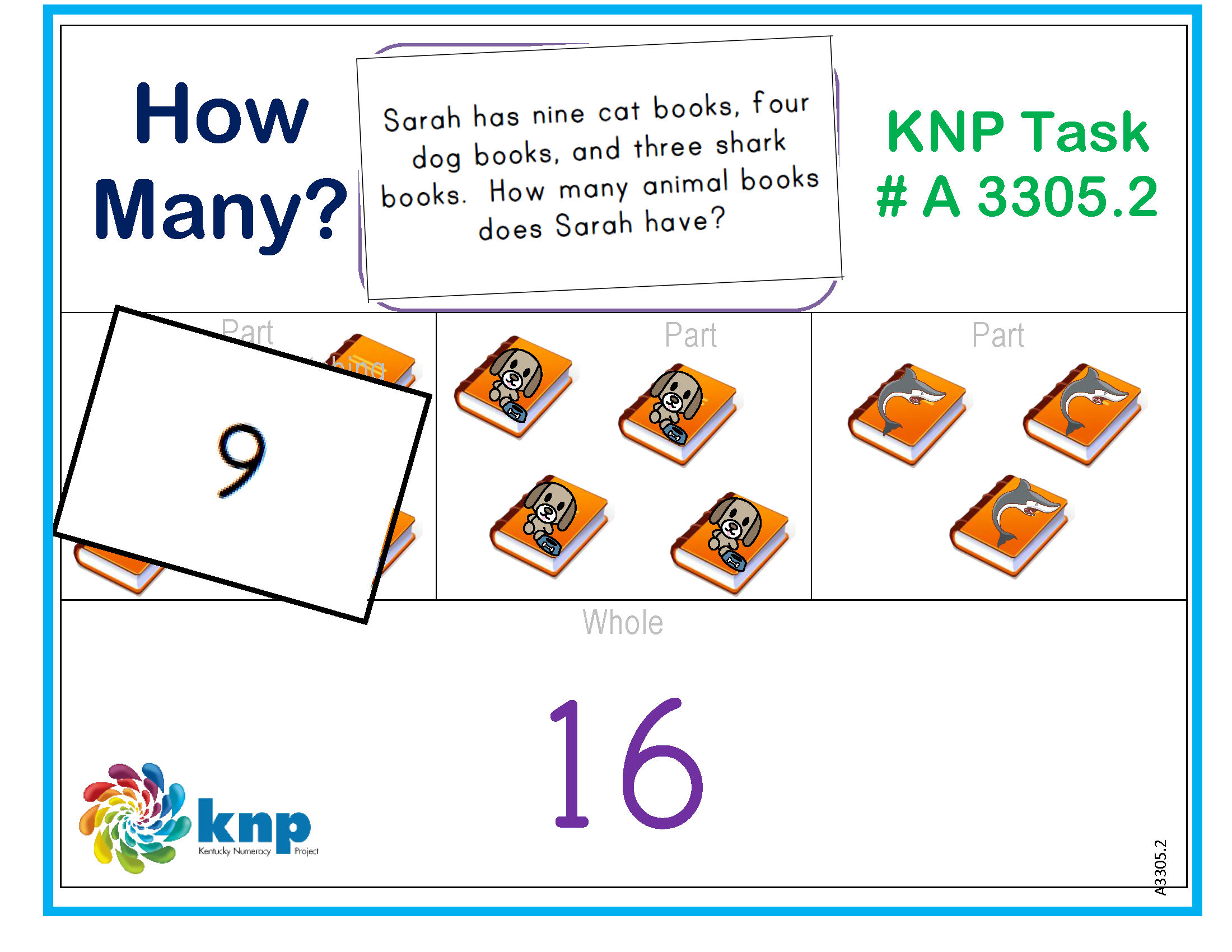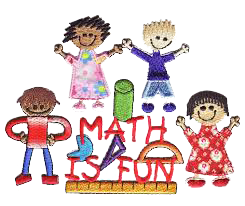“How Many?”
KNPIG ID #A 3305.2
What's this activity about?
This activity is a great way to help your child develop different ways to solve problems that involve adding and subtracting! Do you remember doing “word problems” when you were in school? Sometimes they seemed like trick questions instead of questions related to math. This activity will help your child think about different ways to break questions apart so that they make sense. Basically, word problems are different ways to think about “parts” and “wholes”; when you put one part with another part, you get a whole thing. Sometimes, however, the whole is given and you have to figure out one or more of the parts. That is what often makes word problems challenging for kids. This activity is a fun way to spend time with an important child in your life while also helping him/her explore and build strategies for solving problems dealing with adding and subtracting. Enjoy!
What materials do we need?
Question cards, numeral cards, working mat, and counters

How do we play?
Mix the question cards up and place them face down on a table. Have your child draw a card and place it on the top section of the working mat. Read the question with your child and ask him/her to use counters to show (act out or model) the amounts that are KNOWN in the question. Then ask your child to think about some ways to figure out the amount that is NOT KNOWN in the question by moving/adding/taking away counters as needed. As your child becomes more confident with problem solving, use the numeral cards to cover the groups of counters that are known and then challenge your child to solve for the unknown part or whole.
Where’s the Math?
There is a lot of math in this activity that goes along with what kids are learning in school. Kids are seeing ways to break numbers into parts in more than one way, while also becoming stronger at being able to add and subtract within 20. They are starting to see and use the properties of operations as strategies to use as they begin to add and subtract within 20 and beyond. They are using addition and subtraction within 20 to solve word problems with up to 3 numbers involving situations of adding to, taking from, putting together, taking apart, and comparing, with unknowns in all positions by using counters and numbers to help them solve.
Things to Think About:
As you use this activity with kids, remember to BE PATIENT. Sometimes it’s hard to not to help them along if they are having a hard time figuring out how to solve word problems. They will need to do a lot of thinking and working through trial and error at first, but if they continue to have trouble with figuring out the missing parts or finding the whole, instead of telling them the answer, ask questions that will help them get to the answer on their own. Try asking “what do we know about this question? What is it that we are trying to figure out? How would that look if we modeled it with counters?” When kids are given the chance to figure things out on their own, they gain a deeper understanding of whatever we are trying to help them learn! Talking through these questions with your child is another good way to help them along and it’s ok to work through a question or two with your child to help stimulate their thinking. “Well, I know altogether there are 14, so I’m going to use 14 counters to show the whole amount – do you think that’s a good idea? Now what do you think I should do to help find the missing part? Do you think moving some of these counters might help me figure it out?” Just remember to be patient and keep asking your child to talk about their thinking throughout the activity. This is a challenging area for many students and it takes lots of practice to develop a good understanding of part/part/whole relationships.
Feedback
Send us your thoughts and ideas about these activities. Email the KCM

